UNNO are known above all for their eccentric frame designs. With the new IKKI, the Catalan boutique brand introduce their very first light eMTB, which combines 170/160 mm of travel (f/r) with a TQ HPR50 motor, retailing at € 10,295 (EU price except Germany). We were one of a select group of magazines worldwide that had the opportunity to test the bike exclusively. So, how did it perform on the trail?
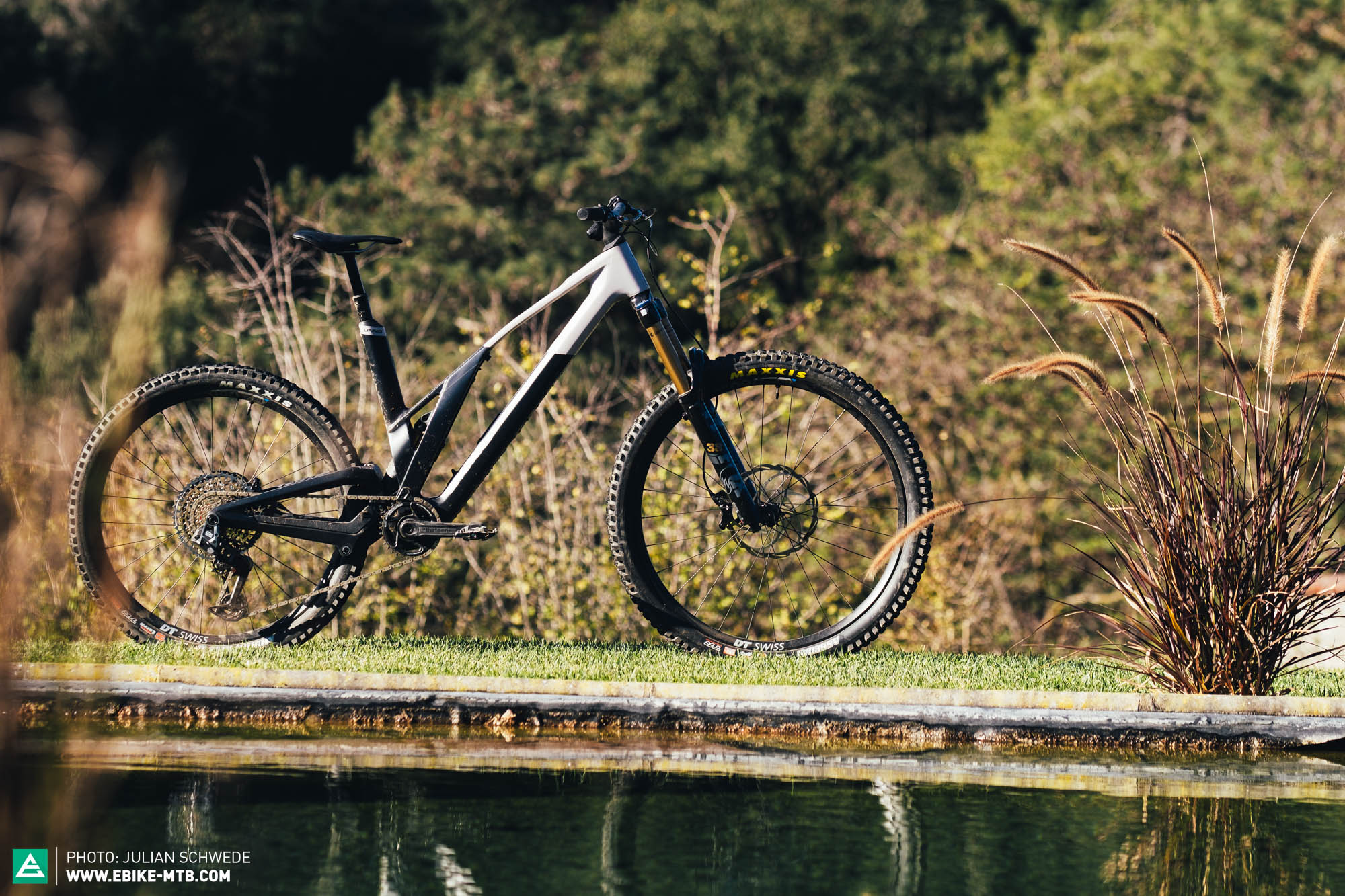
18.9 kg in size S2 | $ 9,795 (US price) | Manufacturer’s website
UNNO was founded in Barcelona by former downhill pro Cesar Rojo, who also happens to be the man behind CERO Designs, a renowned design studio with a diverse portfolio covering the automotive, motorcycle and bicycle industries. Their client list includes big names such as Mondraker and Intense. Thanks to his extensive experience as a designer in both the bicycle and motocross sectors, Rojo acquired a great deal of know-how, which, together with a generous portion of determination, allowed him to establish himself in the industry by creating unusual bikes that are anything but standard.
Initially, UNNO differentiated themselves from the crowd through their handmade bike frames, but the company has grown considerably since then. As a result, the new models are no longer manufactured in Spain, but Asia – though still built to the highest quality standards! About a year and a half ago, UNNO unveiled their first ebike, the Mith, which relies on a powerful Bosch Performance Line CX motor. Now Rojo and his team are officially entering the light eMTB game by adding the new IKKI to their portfolio, which relies on a lightweight TQ HPR50 motor, and 170/160 mm of travel (f/r). However, despite the new approach, UNNO’s light eMTB retains the same geometry as its bigger sibling, the Mith, and remains true to the manufacturer’s progressive, unique design language, ensuring plenty of curious glances on the trail.
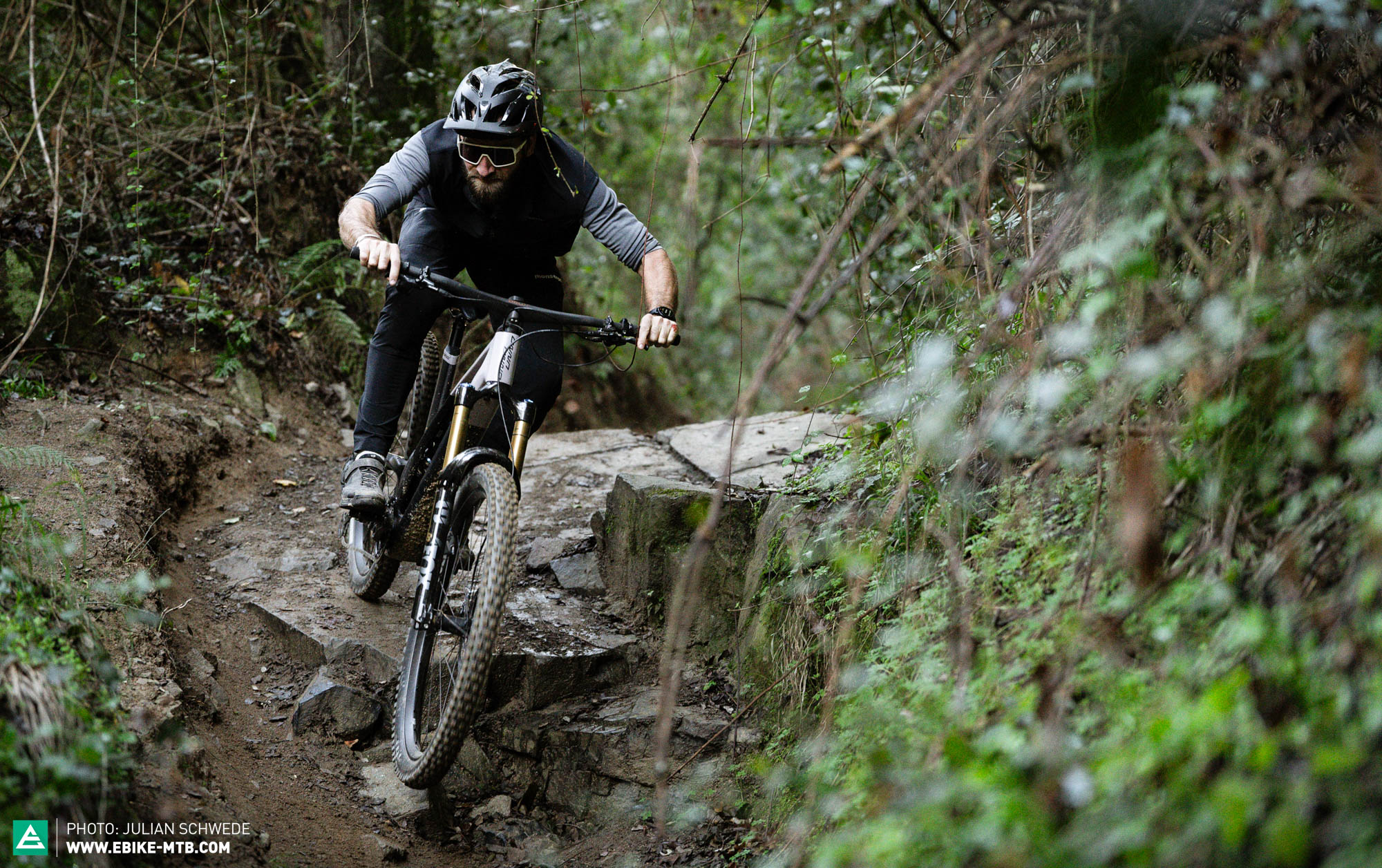
The 2024 UNNO IKKI Race in detail
With its unmistakable silhouette, the IKKI is distinctly recognisable as an UNNO, with the frame relying on several well-thought-out detail solutions. The deep-drawn top tube and striking seat tube dome make for the typical UNNO look, while the geometry is shared with its full fat Bosch counterpart, the Mith.

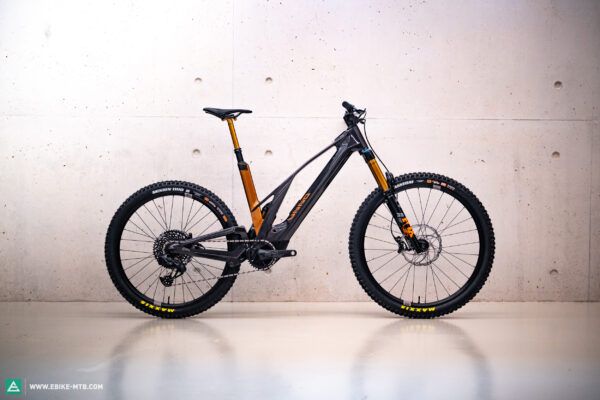
In typical UNNO fashion, the manufacturing quality is top-notch, which becomes evident in the many small yet fine details on the frame and paint finish. Particularly striking is the top tube shape, which is perfectly moulded around the display. The paint finish not only looks great, but also includes a small yet practical detail: UNNO remind you that the IKKI requires significantly more sag than your average eMTB, leaving a practical “30-40 % SAG recommended” note right next to the shock.
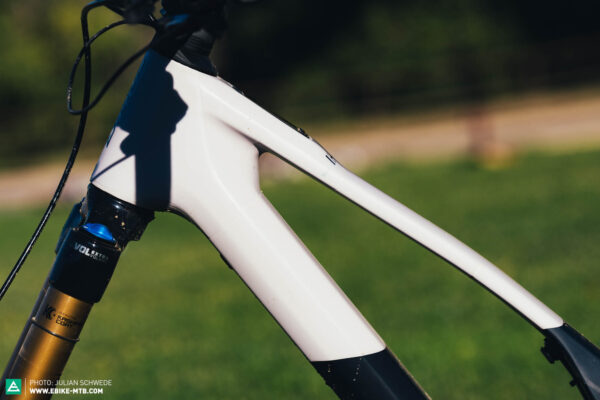
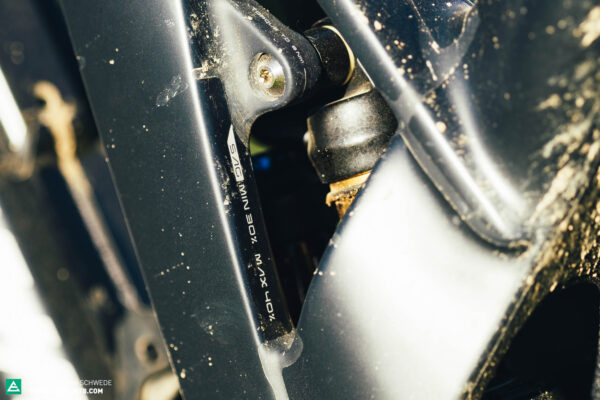
The chainstay protector harmonises well with the overall design of the bike and is glued into a recess in the stay. Despite not sitting 100% flush with the frame on our test bike, it ensured a quiet ride on the trail – at least on the drive side.
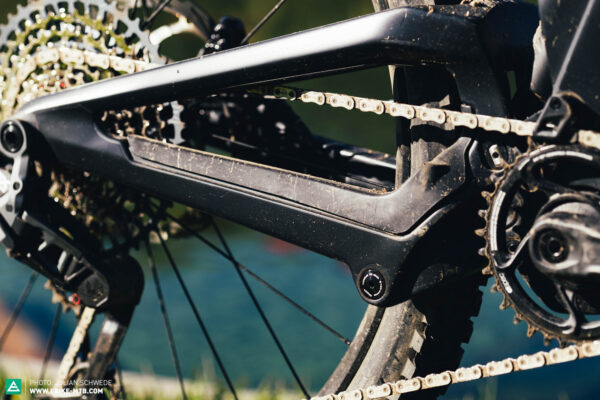
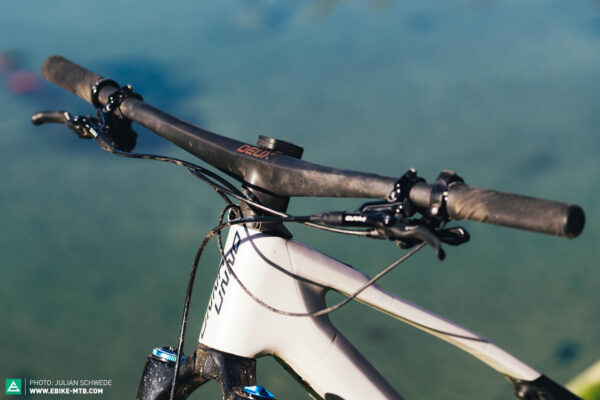
The cables and rear brake line are routed internally, disappearing into the frame through UNNO’s proprietary, two piece DEUX headset, which allows you to route the cables easily without having to disconnect them from the components. Although the system looks neat, it causes the cables to rattle loudly against the frame inside the down tube and bottom bracket area. That said, UNNO managed the limited space between the top tube and down tube extremely well.
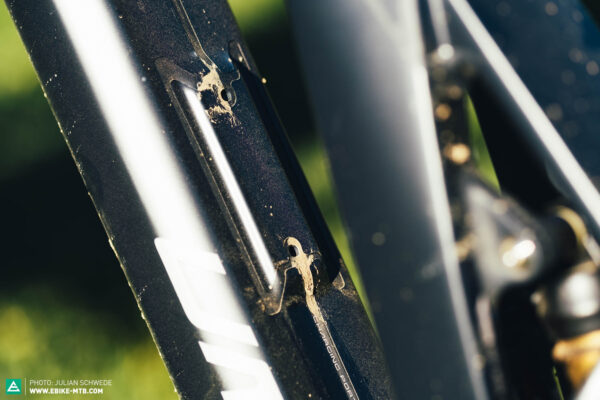
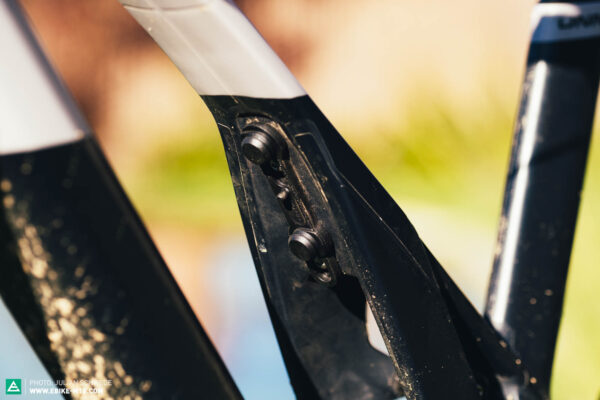
The main frame triangle features a bottle cage mount on the down tube and a tool mount on the bottom of the top tube. Alternatively, this can be used to store the optional range extender battery, though combining it with a water bottle isn’t an option due to the limited space.
The integration of the TQ HPR50 motor system on the new 2024 UNNO IKKI
Delivering 50 Nm of torque, the IKKI’s TQ HPR50 motor helps you get to the trailhead faster. TQ’s compact, lightweight motor hides discreetly behind the chainring, which makes it hardly visible at first glance. The drive is paired with a compact 360 Wh battery, which is permanently integrated into the down tube and allows for a slim frame silhouette. The black and white LCD display might not be a masterpiece of design, but it provides all of the crucial riding data.

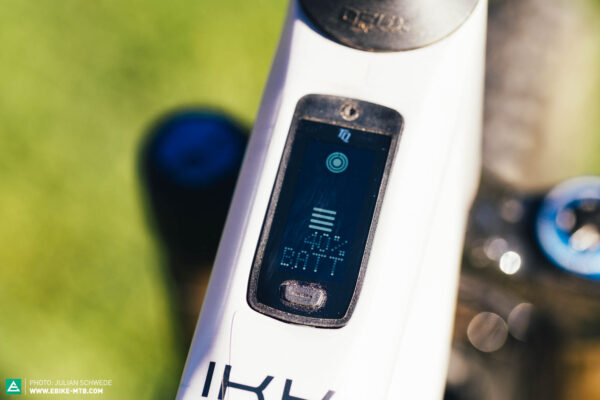
The display shows the battery charge status in five bars and the selected support mode via circle pictograms. Below these, you can display the remaining range, speed, charge status in percentage, or the ratio of motor power to rider power. The one-button display is seamlessly integrated into the top tube, and the riding modes can be selected using a 2-button, bar-mounted remote, which ensures a discreet look and good haptic feedback, and also doubles as a walk mode button and light switch, should you choose to install a lighting system.
The spec variants of the UNNO IKKI – Race and Factory
For this test, we rode the IKKI Race spec, which comes equipped with a top-tier FOX Factory suspension. However, from mid 2024, you should be able to get a more affordable Elite spec variant. In the next paragraph, we’ll tell you al the differences between the Race and Factory specs
The UNNO IKKI Race spec variant we tested comes equipped with top tier components and is aimed at experienced riders. The suspension consists of a highly-tunable 170 mm FOX 38 Factory fork with fancy Kashima coating, and a matching FOX FLOAT X2 Factory shock, which controls 160 mm of travel at the rear. It’s integrated deep into the frame, which makes it rather finicky to adjust – you’ll need a lot of patience and the hand of a neurosurgeon if you’re planning to adjust the low speed rebound. The OneUp dropper post works reliably but doesn’t provide enough travel for a modern e-mountainbike, at only 150 mm in frame size S2. The rubberized thumb lever ensures good haptic feedback and excellent grip, even without gloves. Formula Cura 4 brakes with a 220 mm rotor at the front and 200 mm disc at the rear provide reliable, powerful deceleration, though the sharp bite point might take some getting used to. The electronic, wireless SRAM GX Eagle Transmission drivetrain ensures smooth, effortless shifting. For the cockpit, UNNO rely on their proprietary DEUX stem/handlebar unit with stiff 800 mm handlebars. The one-piece design doesn’t allow for fine tuning, except for the stack height, which can be adjusted with spacers. For the wheels, the Catalan brand relies on a mixed-size DT Swiss HX 1700 alloy wheelset and MAXXIS tires, combining an ASSEGAI in the soft MaxxGrip rubber compound and EXO+ casing up front with a Minion DHR II in the harder MaxxTerra compound and robust DoubleDown casing at the rear – a flawless choice for excellent grip and control.

UNNO IKKI Race
€ 10,295
Specifications
Motor TQ HPR50 50 Nm
Battery TQ HPR Battery V01 360 Wh
Display TQ 0-LED
Fork FOX 38 Factory 170 mm
Rear Shock FOX Float X2 Factory 160 mm
Seatpost OneUp Dropper Post 150 mm
Brakes Formula Cura 4 220/203 mm
Drivetrain SRAM GX AXS Eagle Transmission 1x12
Stem DEUX Enduro Bars 40 mm
Handlebar DEUX Enduro Bars 800 mm
Wheelset DT Swiss HX 1700 29"/27.5"
Tires MAXXIS ASSEGAI EXO+/ MINION DHR II DD 2.5"/2.4"
Technical Data
Size S1 S2 S3
Weight 18.9 kg
Perm. total weight 140 kg
Max. payload (rider/equipment) 117 kg
Trailer approval no
Kickstand mount no
Specific Features
tool mount
The spec of the 2024 UNNO IKKI Factory model
Above the near-flawless Race spec is the Factory flagship model, which relies on a lightweight carbon wheelset, electronic RockShox Reverb AXS dropper post and slightly lighter SRAM XX Eagle Transmission drivetrain. However, the only real advantage of the expensive spec is the butter-smooth action of the wireless dropper post – the rest of the components are slightly lighter, but don’t necessarily perform better or last longer. In our opinion, the Race spec of our test bike is the perfect match for riders who care more about downhill performance rather than lightweight construction. The Factory model retails at $ 12,295 (US price).
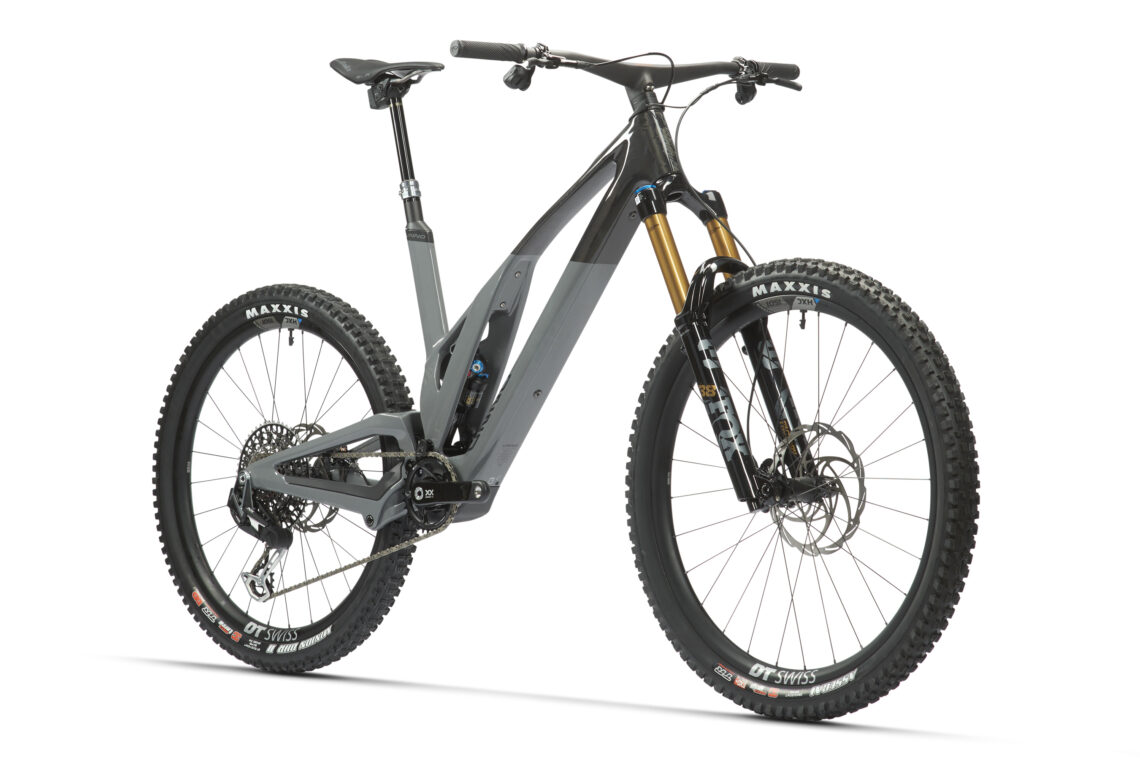
UNNO IKKI Factory
€ 13,095
Specifications
Motor TQ HPR50 50 Nm
Battery TQ HPR Battery V01 360 Wh
Display TQ 0-LED
Fork FOX 38 Factory 170 mm
Rear Shock FOX Float X2 Factory 160 mm
Seatpost RockShox Reverb AXS 125/150/170 mm
Brakes Formula Cura 4 220/203 mm
Drivetrain SRAM XX AXS Eagle Transmission 1x12
Stem DEUX Enduro Bars 40 mm
Handlebar DEUX Enduro Bars 800 mm
Wheelset DT Swiss HXC 1501 29"/27.5"
Tires MAXXIS ASSEGAI EXO+/ MINION DHR II DD 2.5"/2.4"
Technical Data
Size S1 S2 S3
Weight 18.5 kg
Perm. total weight 140 kg
Max. payload (rider/equipment) 121 kg
Trailer approval no
Kickstand mount no
Specific Features
tool mount
The geometry of the 2024 UNNO IKKI – Slack and plenty of SAG
The UNNO IKKI adopts the geometry from its full-fat counterpart, the Mith, which is rather moderate on paper. The bike is available in three sizes (S1-S3), offering a suitable option for riders between 160 to 200 cm. Combining a 64° head tube angle and 77° seat tube angle, the IKKI doesn’t look too extreme at first glance, but if you take into account the generous amount of recommended sag for the rear suspension (up to 40%), the head angle slackens up significantly once you’re in a normal riding position. At 460 mm, the seat tube is relatively long, significantly restricting freedom of movement on the bike in combination with the short-travel 150 mm dropper post. Chainstay length is 450 mm across the board, and doesn’t grow with the frame size.

| Size | S1 | S2 | S3 |
|---|---|---|---|
| Top tube | 570 mm | 605 mm | 647 mm |
| Seat tube | 440 mm | 470 mm | 510 mm |
| Head tube | 107 mm | 120 mm | 145 mm |
| Head angle | 64° | 64° | 64° |
| Seat angle | 77° | 77° | 77° |
| Chainstay | 450 mm | 450 mm | 450 mm |
| BB Drop | 30-15 mm | 30-15 mm | 30-15 mm |
| Wheelbase | 1,224 mm | 1,265 mm | 1,316 mm |
| Reach | 435 mm | 470 mm | 510 mm |
| Stack | 630 mm | 640 mm | 663 mm |
The 2024 UNNO IKKI Race on the trail – Stiff, fast and progressive
First off, the UNNO IKKI turns out to have its own distinct personality, meaning that it takes some getting used to before you feel 100% comfortable. This is mainly due to the unusual rear suspension design, which is very plush off the top and becomes increasingly progressive, with UNNO recommending a SAG of 30 to 40 % – significantly more than most bikes. We tested the IKKI at 35% sag!

When riding on level ground, the high front end ensures an upright, relaxed pedalling position, which is comfortable even for long days in the saddle. Despite the generous amounts of sag, the rear suspension is surprisingly firm, which is further emphasised by the relatively stiff frame and carbon components. As a result, the IKKI passes on hits and bumps directly to the rider. While this provides a good level of feedback from the ground for technical riding, it makes it less comfortable for touring. Despite the high front end, the UNNO is easy to control on climbs, with the front wheel always tracking efficiently – and there’s always sufficient traction at the rear too. The TQ motor perfectly suits the sporty orientation of the bike, making you do your fair share of the work when pedalling to the trailhead. As a result, you’ll have to pedal actively uphill, because the motor only delivers its power with higher cadences, feeling at home on moderately steep fire roads. On steep, technical climbs, however, the IKKI requires good riding skills and greater physical effort to get you to the top of the mountain – the TQ motor isn’t a shuttle truck.
The IKKI is incredibly nimble on demanding, techy trails and doesn’t shy away from rougher terrain either.

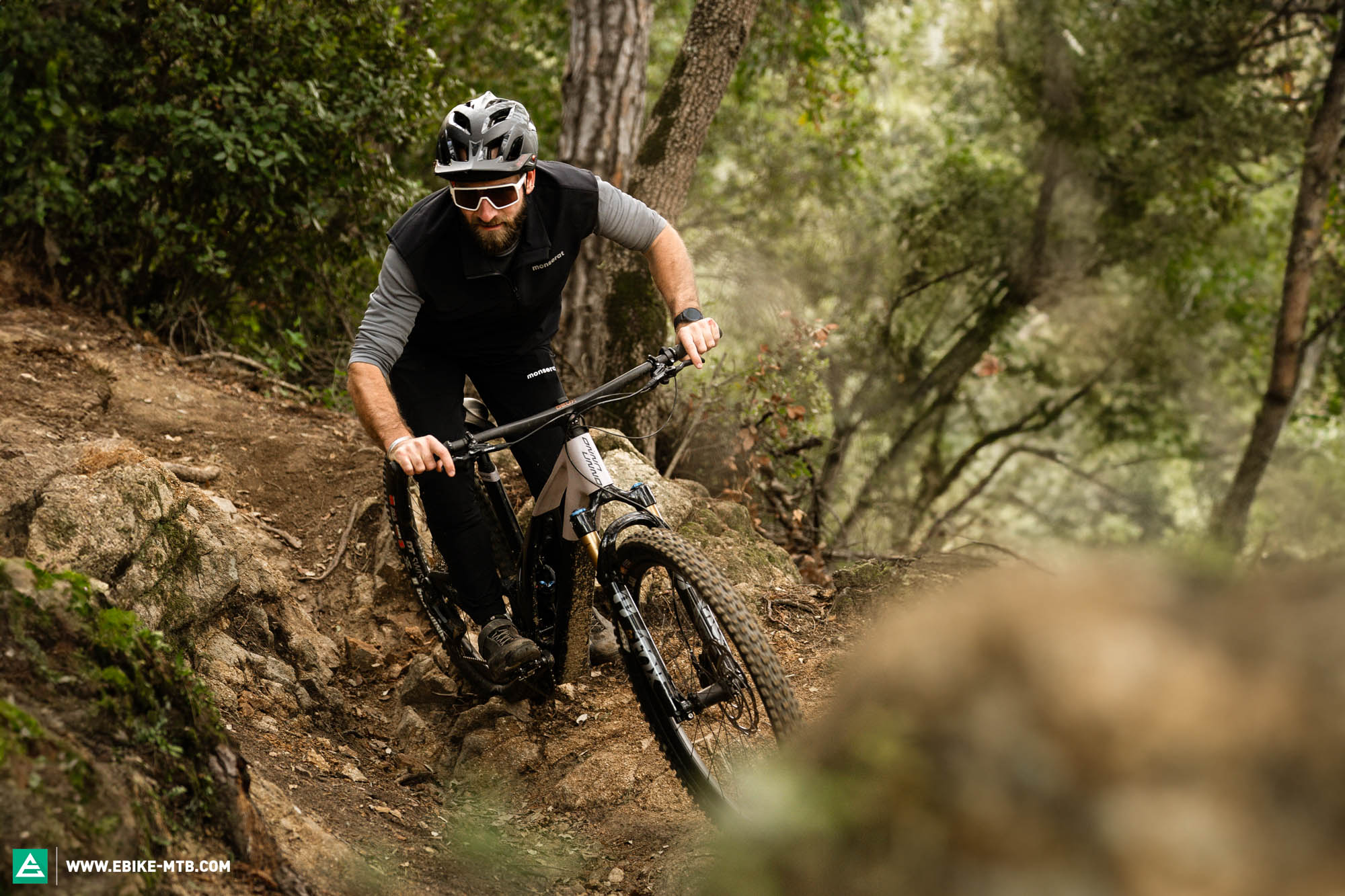
When gravity takes over, the mixed wheel setup integrates you deeply and centrally into the frame. Despite the balanced suspension, the high front end has its drawbacks in open, flat corners, requiring you to actively weight the front wheel to keep it planted. If you do so, the MAXXIS ASSEGAI front tire with soft MaxxGrip rubber compound generates plenty of traction. On flowing trails with berms and rollers, the progressive suspension provides tons of support, rewarding an active riding style with tons of speed, catapulting you out of berms faster than when you approached the corner. When pumping through rollers and berms, the suspension gives back what you put in, generating speed instead and encouraging you to leave your fingers off the brakes for a few more seconds. The IKKI is incredibly nimble on demanding, techy trails and doesn’t shy away from rougher terrain either. The high front end inspires huge amounts of confidence, while the rear suspension always sticks to the ground, generating huge amounts of traction while at the same time providing good support with its progressive behaviour. This enables quick direction changes and provides the rider with plenty of feedback from the ground which. Together with the direct handling, this isn’t necessarily the best option for beginners, quickly putting the level of safety into perspective. The IKKI still provides enough reserves with bigger hits, encouraging you to commit to bigger jumps and bailing you out of botched landings. On flat trails, however, the potent UNNO feels like too much bike, making short work of smaller trail features.
Tuning tip: conventional two-piece cockpit for more compliance and better adjustability
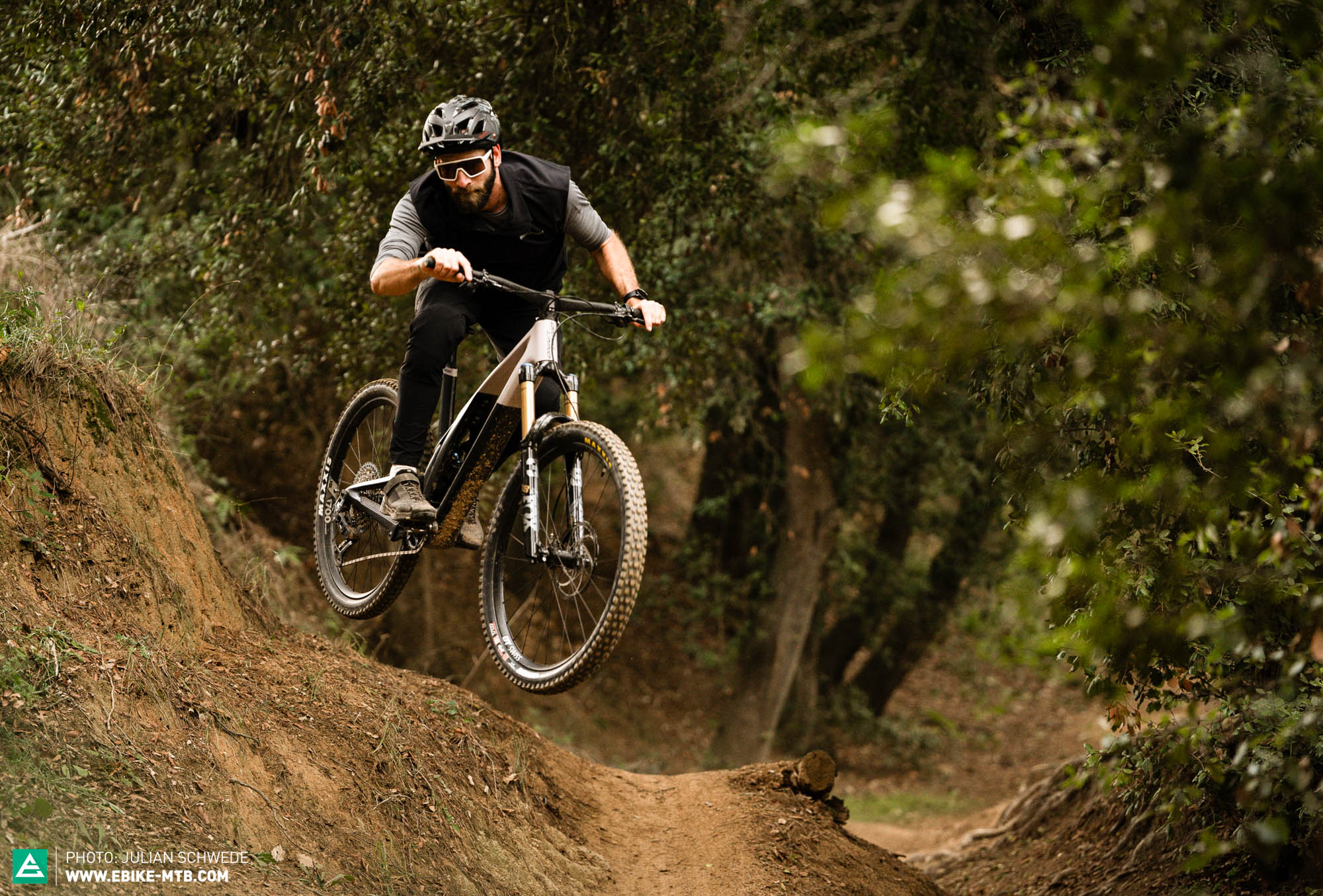
Who should take a closer look at the 2024 UNNO IKKI?
The UNNO IKKI is the optimal choice for riders with a racing background and those who have the desire to shred hard, and have the skills to back it up – especially if you like firmer bikes with direct handling. The IKKI is also aimed at design enthusiasts, who are not just looking for a bike, but also a classy piece of two-wheeled furniture. In a nutshell, the IKKI looks just as good next to a Florence Knoll sofa as it does outside the bar – and with the right rider, on the trail! That said, UNNO’s light eMTB debut is too stiff and demanding for beginners, as it offers little comfort and isn’t especially forgiving of riding mistakes.

Our conclusions about the new 2024 UNNO IKKI eMTB
In the right hands, the UNNO IKKI is an authentic trail rocket. Advanced riders will benefit from the firm suspension and excellent feedback from the ground. Beginners, on the other hand, will be rather overwhelmed by its complex, harsh character. When climbing, the UNNO impresses with good traction and a natural, sporty ride feeling. For roughly $ 10 k, you’ll get a breath-taking design object that has the potential to be brutally fast on the trail, and attracts lots of attention.
Tops
- Unique design and top-notch manufacturing quality
- Pretty flawless spec
Flops
- Not for laid-back trail surfing
- Shock adjustments are hard to reach
- Dropper post is too short
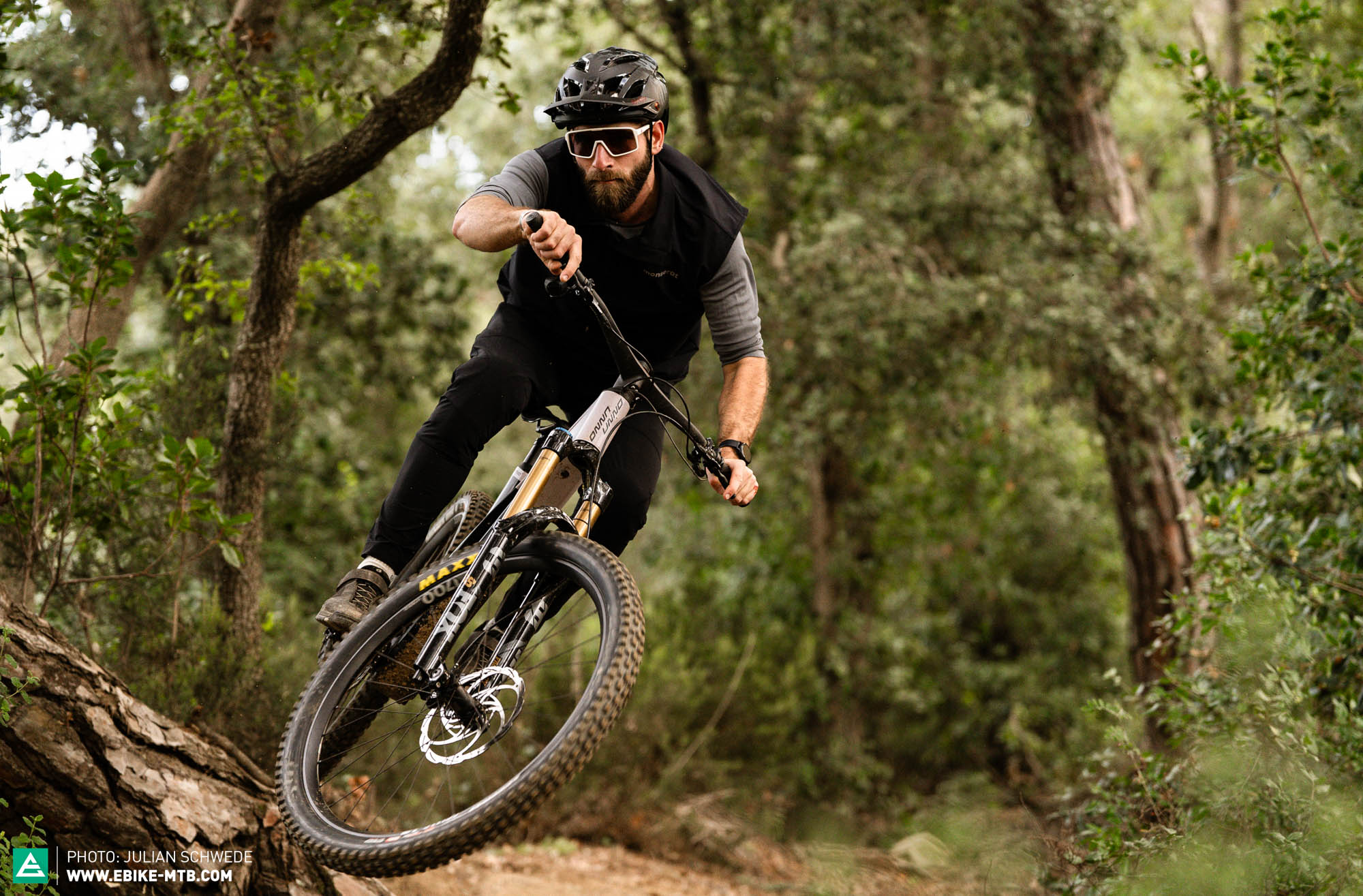
More info: unno.com
Did you enjoy this article? If so, we would be stoked if you decide to support us with a monthly contribution. By becoming a supporter of E-MOUNTAINBIKE, you will help secure a sustainable future for high-quality cycling journalism. Click here to learn more.
Words: Julian Schwede Photos: Julian Schwede; David Acedo









